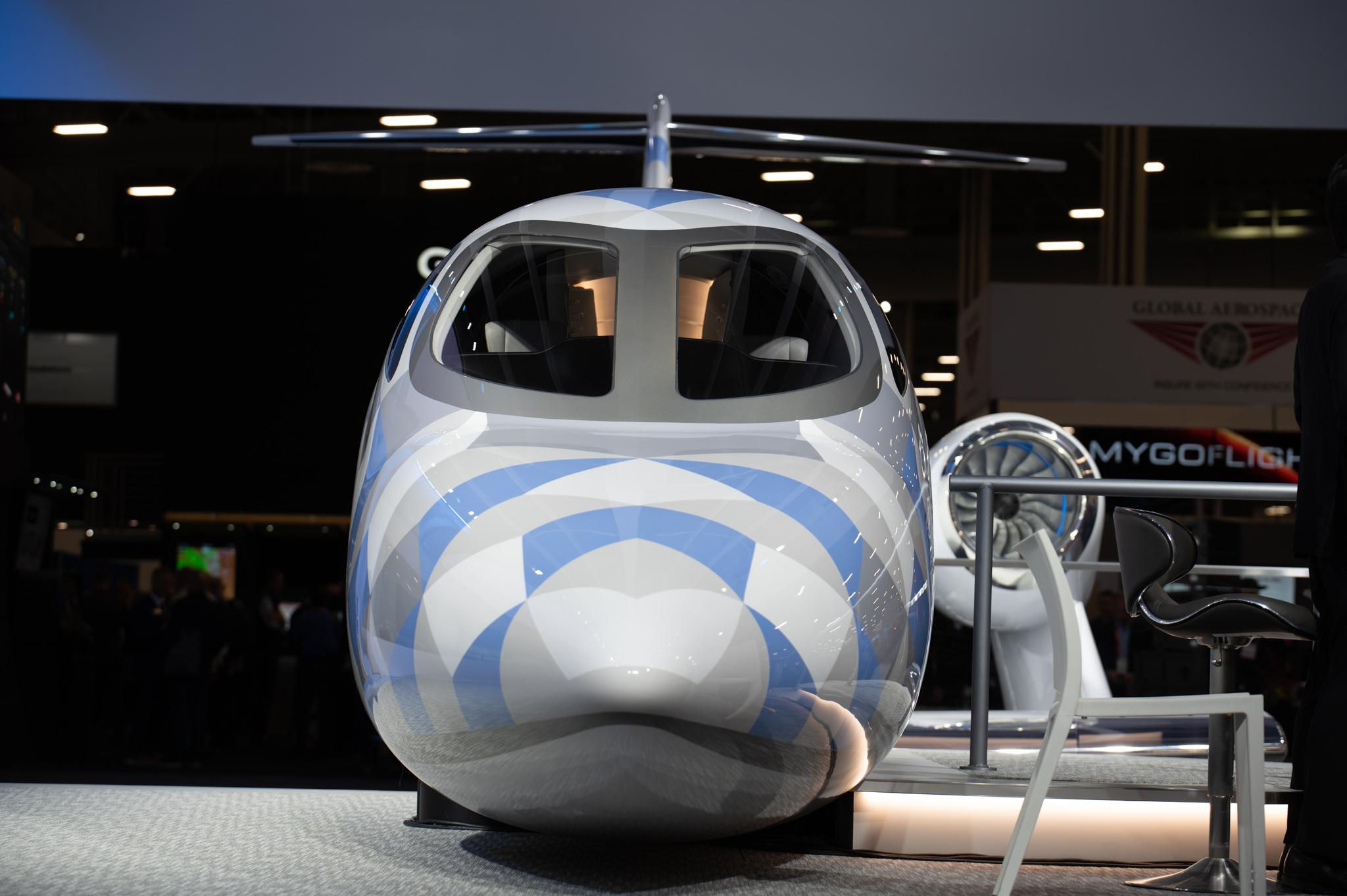
In the world of business aviation, where secrets are hard to keep, Honda successfully surprised attendees at NBAA-BACE by revealing the HondaJet 2600 concept–an all-new, long-range light jet with trans-continental capability. Photo: Brett Schauf/ShowNews

Unveiling a full-size cabin mockup at the show, HondaJet designer and company founder Michimasa Fujino says the inspiration for the potential new family member emerged during work on the Elite–the enhanced HondaJet HA-420 variant. “We became aware of the need for a new kind of aircraft based upon a different market segment. The conditions in the business aviation industry have signaled the need for rapid cross-country travel and the ability to carry more passengers and payload. And the dire necessity of cutting carbon emissions.” Photo: Brett Schauf/ShowNews

The modular design cabin, with a pressure altitude of 6,360 ft., will be reconfigurable to accommodate eight, nine or 10 passengers and one or two pilots. Photo: Brett Schauf/ShowNews

The flight deck will be based on the Garmin G3000 avionics suite. “We are target targeting a high degree of commonality with seamless transition from the HondaJet Elite type rating to the HondaJet 2600,” says Fujino. Photo: Brett Schauf/ShowNews

The deeper set of the cockpit windows reflects changes to the baseline HondaJet fuselage cross-section which for the 2600 is more ovoid with a height of 62.5 in, providing additional headroom in the cabin. Photo: Brett Schauf/ShowNews

Derived directly from the baseline HondaJet, the new design incorporates the same over-wing engine mounts, composite fuselage structure and natural laminar-flow wing features. However, the aircraft is stretched with an overall length of 57.8 ft compared to 42.6 ft, for the HA-420, and has a far bigger span of 56.7 ft – around 16 ft. greater than the baseline jet. The high aspect ratio wing is designed to give the aircraft a max cruise altitude of 47,000 ft., and a take-off distance of 3,300 ft. with a maximum take-off weight of 17,500 lb. Photo: Brett Schauf/ShowNews

The aircraft is designed to fly up to 2,625 nm with as many as 10 passengers and one crew – making it the longest-range single-pilot business aircraft in the world. Photo: Brett Schauf/ShowNews

“We are featuring more electrification and automation to make the flight easier, safer, and more enjoyable,” says Fujino who cites the incorporation an advanced steering augmentation system as an example. Photo: Brett Schauf/ShowNews

Other features include autobrakes, a runway overrun awareness and altering system, autothrottle and electric spoilers, steering and brakes. The flight deck will be based on the Garmin G3000 avionics suite. Photo: Brett Schauf/ShowNews

Comments